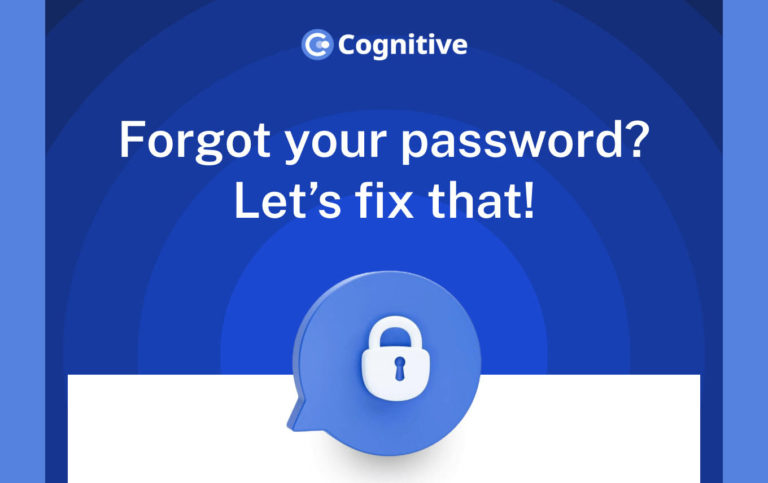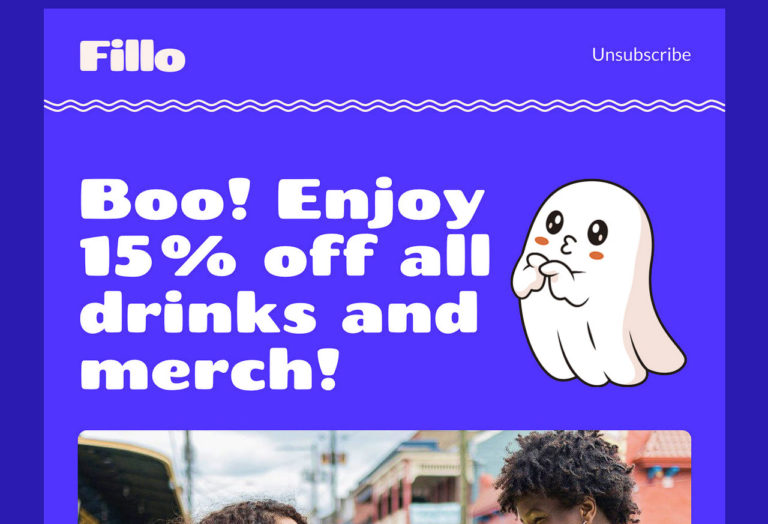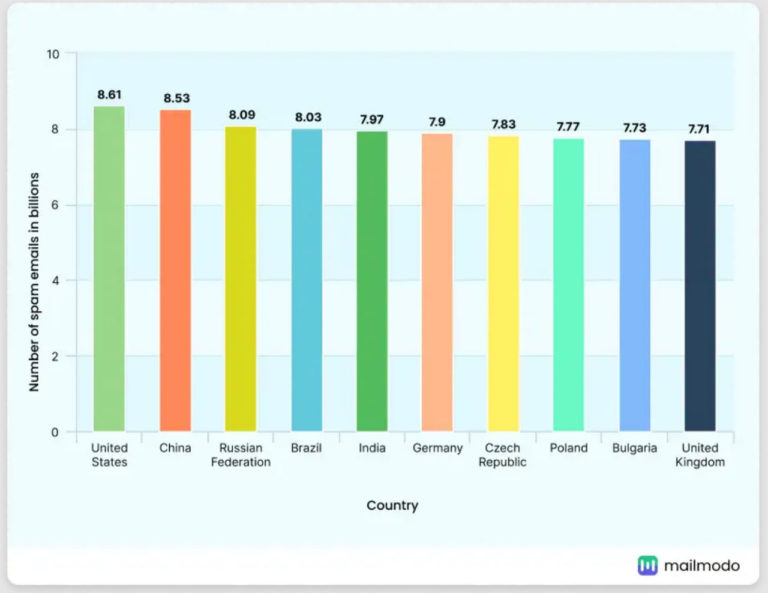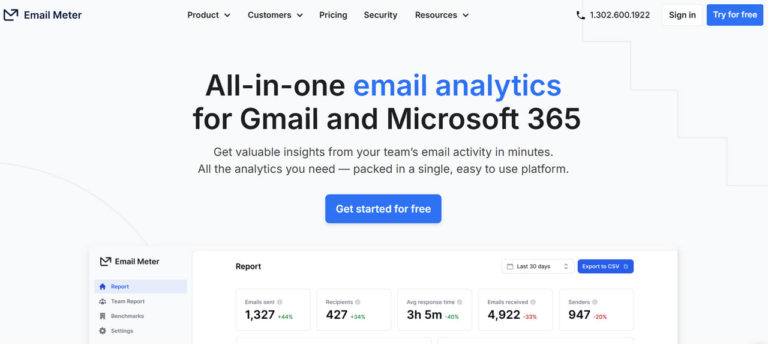A mailing list is a powerful tool for businesses across niches seeking to establish direct and meaningful communication with their target audience. It helps companies achieve numerous goals, such as fostering brand engagement, keeping subscribers informed, and even dragging them into the funnel. Whether for marketing or community building, it is a key asset for email campaigns and strategies.
As a cornerstone for personalized interaction, targeted marketing, and measurable analytics, mailing lists must stay healthy to perform at their best. Otherwise, it will undermine all the company’s efforts in a digital channel and eventually ruin its reputation and presence.
Numerous practices ensure good email list hygiene, from the proactive introduction of double opt-in to the reactive addressing of spam complaints and removal of unsubscribed contacts. Let’s discuss the essentials and importance of a healthy contact database and consider the best email list hygiene tips to improve campaign effectiveness.
What Is Email List Hygiene?
Email list hygiene is a set of practices and steps to maintain the high-quality content of the contacts database. It stands behind great campaign performance and long-standing benefits by performing these crucial goals:
- It connects with a receptive audience.
- It delivers messages right to subscribers’ inboxes.
- It minimizes soft and hard bounces.
- It reduces spam complaints.
- It averts blacklisting.
- It improves the sender’s score.
- It boosts engagement, conversions, and revenue.
In general, email list hygiene entails several basic stages.
The cleaning stage.
Email marketers thoroughly review the email list and verify every existing address to identify and remove all invalid or damaging instances. This might be:
- Fake or mistyped contact addresses left by subscribers in signup forms;
- Inactive subscribers who got disengaged with the brand and its product and content;
- Bounced contact addresses that experience either temporary or permanent problems with delivery.
The maintenance stage.
It implies a reactive approach to issues that have occurred. During this stage, companies deal with email addresses whose owners have unsubscribed, left complaints, or placed newsletters into the spam folder.
The preventive stage.
This stage involves a proactive approach to anticipating and averting problems with email list hygiene before they happen. This includes maintaining healthy email-sending habits, adopting double opt-in, using protected sign-in forms, and avoiding “black” practices like buying contacts from third parties.
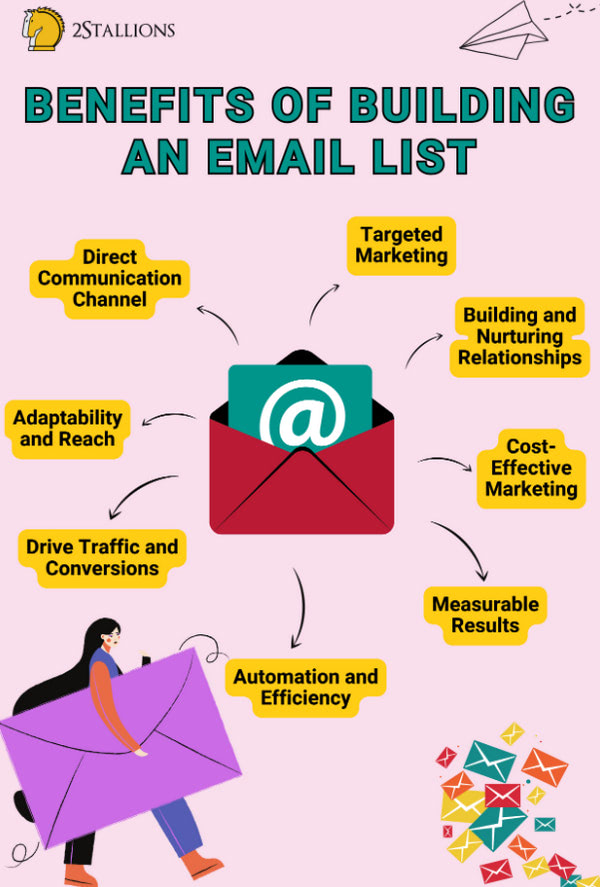
Benefits of building an email list (infographic by 2Stallions)
Email Addresses Influencing Email List Hygiene
Email list hygiene depends on many tiny yet key factors. But, first and foremost, it is heavily influenced by its content. Several types of contact addresses may damage the health of the email list and ipso facto ruin email campaign performance. They are:
Invalid or Typos Email Addresses
Invalid email addresses are the ones that have errors. They do not match any existing email account and, therefore, do not exist. As people are prone to mistakes, these contacts regularly appear on mailing lists, clogging them with incorrect data and damaging email list hygiene. They generate hard bounces that hurt the sender’s reputation, ruin the deliverability rate, and waste precious resources.
Spam Traps or Honeypots
Spam traps or honeypots look like real email addresses but cannot be used for communication as some have never been valid, while others were abandoned and recycled. Mailbox providers, internet service providers, and anti-spam organizations such as blacklist vendors regularly create them and place them on the Internet to catch spammers, bad actors, and companies with poor email marketing habits.
Companies that send emails to spam traps are flagged as spammers. This leads to a poor sender’s reputation, blacklisting and eventual halting of the company’s presence in the channel.
Disposable Contact Addresses
Disposable emails are short-lived contact addresses that self-expire after a short time. They are correct but useless, as people create them to get what they want from the company but avoid receiving emails. This usually happens with lead-generation campaigns based on contests and giveaways. Reaching such emails leads to poor deliverability and a negative impact on the sender’s reputation.
Backlisted Email Addresses
Blacklisted email addresses are contacts blocked by blacklist providers and anti-spam organizations. They are suspected of malicious activities. Although they may eventually regain their reputation, they may still harm businesses connecting them while blocked.
Companies that reach these email accounts may either experience a hard bounce (as the receiving server will reject the email) or end up in a spam folder. Either way, this will harm the deliverability rate, email campaign performance, and sender’s score.
Duplicated Email Accounts
Duplicates are real and valid email accounts that belong to the same person. They often appear on the mailing list due to poor management or the acquiring process. Sending emails to such accounts will easily overwhelm the owner and may cause a drastic reaction, such as spam complaints or unsubscribing. This leads to disengagement with a receptive audience, poor deliverability, and an increased spam rate.
Abandoned, Deactivated, or Deleted Emails
Users may intentionally deactivate, abandon, and delete their email accounts for many reasons. They no longer need them, switch to a different email provider, move to a different domain, get another job, or have concerns about privacy and security.
Whatever the case, these email addresses are useless to the company and its email campaign. Once an email is abandoned or deactivated, any email sent to that address will be hard-bounced back. In the worst-case scenario, the company risks getting blacklisted, as these deleted email accounts could be turned into spam traps by anti-spam intelligence.
Disengaged Email Contacts
Disengaged email contacts are real and valid addresses belonging to subscribers who have not opened or interacted with an email for a long time. For some companies, this could be several months; for others, it could be half a year.
As a rule, reaching out to these emails ends with no reaction from the recipient. While this may not drastically damage your sender’s reputation and deliverability rate like spam traps, it may ruin your email campaign performance and cause a waste of precious resources. Plus, companies risk causing spam complaints, as the contacts do not welcome the company’s content.
Unsubscribed Email Accounts
According to Hubspot, the average unsubscribe rate varies between 0.13 to 0.8%. That means people become disengaged from brands and regularly unsubscribe from mailing lists. No one is immune to that.
Leaving these contacts on the mailing list and continuing to use them in email campaigns can be considered spam activity by ISPs and mailbox providers, eventually leading to legal consequences, fines, and account suspension.
Importance of Email List Hygiene
With such a diverse pool of contacts negatively influencing email list health, it is no surprise that keeping a close eye on its hygiene is among the top recommendations for companies striving to achieve high email performance. This is not only a matter of minimizing the bad impact of these types of email accounts but, most importantly, ensuring the quality of the content.
After all, the email list is the cornerstone of every email campaign, allowing a company to exist successfully in the channel. A clean and healthy list increases chances for highly-performed outreach; conversely, when clogged and cluttered, it wastes resources and seriously damages the sender’s reputation.
Consider several good reasons to keep its health excellent by implementing professional email list hygiene tips:
It Minimizes the Bounce Rate.
Minimizing bounce rate is the most evident reason for maintaining good mailing list hygiene, as they do nothing good for the company. Soft or hard, they negatively impact the company’s presence in the channel.
Not only do they harm email campaign performance and cause wasted resources, but most importantly, they indicate poor email-sending habits. This is a strong signal to ISPs, mailbox providers, and other integral participants of the email environment to keep a close eye on the company and its activity in the channel. This may easily lead to a poor sender’s score, a rigorous screening process, and blacklisting.
It Decreases Complaints and Spam Rates.
A drop in complaints and spam rates is another reason to commit to excellent email list health. Higher-than-acceptable spam complaints and rates damage your sender’s score, much like unattended hard bounces. They ruin your brand’s reputation, trust, and loyalty. They also worsen your results with legitimate engaged subscribers, as your correspondence will not always get delivered to their inboxes.
There is more. This year, Google and Yahoo enforced a low spam rate requirement for all bulk senders. To reach your subscribers using their services, you should set a threshold of 0.3%. This is increasingly low and could be achieved only with a rigorous email list cleaning process.
It Ensures Good Email Deliverability.
Mail list hygiene directly influences key deliverability metrics, particularly delivery rate, deliverability rate, open rate, spam rate, and even clicks and conversions. As you reach the existing and active email accounts engaged with the brand, you increase the chances of your correspondence being delivered right to the door, skipping all spam filters and rigorous check-ups.
If you ensure your mailing list has only subscribers engaged with the brand and content, you may expect higher open rates, clicks, and conversions. This positive reaction to your message signals to mailbox providers that you are a trustworthy partner whose correspondence is of value. You may get high inbox placement and an increase in the sender’s score.
It Secures Better ROI.
Return on investment is a key performance indicator and one of the critical factors underlying a successful company’s existence in the email channel. Excellent email list hygiene, which entails high-quality content and a receptive target audience, is the time-proven way to improve it.
As the company reaches only subscribers who are most likely to engage with the brand’s message and positively react to it by clicking on links and following leads, it ensures the company’s time, money, and resources were not in vain. It also secures a high click-through rate that drives better conversions and leads, directly influencing the return on investment.
It Improves the Sender’s Score.
Lastly, improving the sender’s score is perhaps one of the most vital reasons many companies overlook as they prioritize conversions and ROI. However, an excellent sender score allows brands to email campaigns in the channel in the first place.
The sender’s score describes the company’s behavior and history in the email channel and reflects its trustworthiness and legitimacy. It tells a lot to ISPs, mailbox providers, and anti-spam organizations. It is one of the main decisive factors that allows the company to pass filters and meticulous ISP algorithms and reach the contact’s inbox.
The quality of a mail list is directly connected with the sender’s score. The more companies send their messages to active and engaged subscribers, the better their response will be, and the more positively mailbox services will react to the brand’s correspondence. Good response translates not only into high open rates and conversions but ultimately into a good sender’s score, which comes a long way.
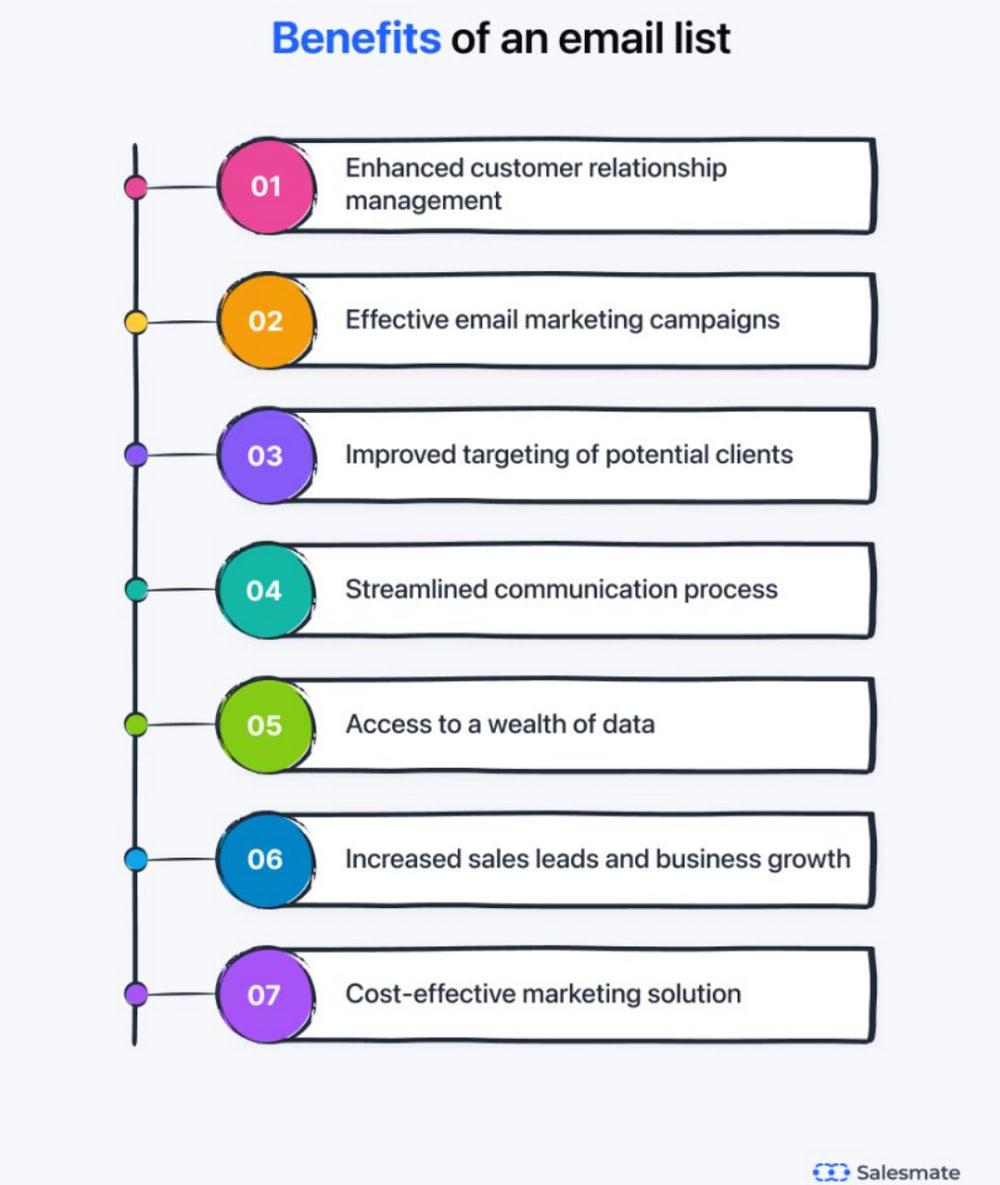
Benefits of maintaining a clean and healthy mailing list (infographic by Salesmate)
Signs that the Email List Needs Cleaning
Cleaning your email list must be an integral and regular step in your email marketing routine. However, as practice shows, it often comes as an afterthought. If you are one of those who constantly put this step off until better times, here are some alarming calls that your email list needs cleaning.
High Bounce Rate
The bounce rate reflects the percentage of bounced messages during the email campaigns. In other words, it indicates email accounts that did not receive your message and were returned. The recipient mail server may reject emails for temporary or permanent reasons. A hard bounce indicates a permanent issue, as the account is non-existent. A soft bounce indicates a temporary issue that can be resolved. However, in some cases, it can turn into a hard bounce.
Whatever bounce you have, if the metric goes up, something is wrong with the quality of your contacts and ipso facto mail list health.
High Unsubscribe Rate
Another alarming sign that a mailing list requires cleaning and scrubbing is the increased unsubscribe rate. While people may opt out of subscriptions for many good reasons, as practice shows, they were disengaged long ago. However, many companies neglect their subscribers’ inactivity and engagement levels, eventually facing a spike in unsubscribe rates.
Email campaign success largely depends on timely company decisions. If you notice people starting to disengage with newsletters or opt out of your mailing list, it is time to sift through your contacts database to identify all potential leavers.
High Spam Complaints Rate
Much like a high unsubscribe rate, an increase in spam complaints indicates low engagement, loss of interest in brand and content, and, most importantly, inactivity of some of your email accounts. Along with addressing complaints, it is vital to go through your mailing list and surface those dormant subscribers so that you can put them in a separate group and develop a special strategy for them.
How to Clean Your Email List?
A list-cleaning mission entails companies going through contact addresses and dealing with all those that may badly influence their health. This includes removing fake, incorrect, or otherwise invalid accounts and developing a strategy to handle disengaged, dormant, and inactive subscribers. The process can be broken into several basic steps:
Step 1 – Closely review the mailing list and identify all problematic and potentially harmful email addresses, including the following:
- Email addresses with an incorrect format, syntax structure, or domain name;
- Email addresses with non-existent mailbox names;
- Hard bounced accounts;
- Soft bounced accounts;
- Spam email addresses;
- Blacklisted email addresses;
- Catch-all email addresses;
- Duplicates;
- Inactive and disengaged email accounts;
- Unsubscribed email accounts.
Step 2—Remove hard-bounced accounts, spam traps, catch-all addresses, duplicates, unsubscribed accounts, and addresses with incorrect format or typos.
Step 3 – Work closely with soft-bounced accounts, which may eventually become hard bounces.
Step 4 – Single out your less-active or unresponsive subscribers. Put them into a separate group and initiate a re-engagement campaign.
Step 5 – Delete unresponsive contacts after re-engagement campaign.
Cleaning, freshening, and scrubbing the content of your subscription database is a daunting, time-consuming, and tricky process. Although you can do everything manually, it is best to rely on an email list cleaning service to do the job. Not only can specialized email marketing tools assist in identifying poor-quality email contacts, but they might also help automate this process and maintain the health of the mailing list in an efficient and timely manner.
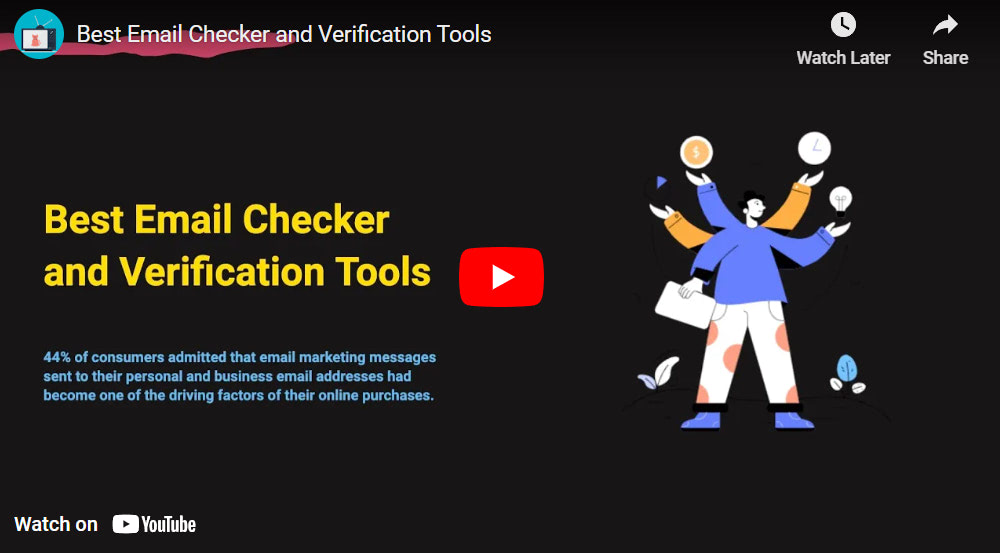
Best email checker and verification tools by Unspam
The Best Email List Hygiene Tips
From understanding the nuances of bounced messages to the importance of maintaining high senders’ scores, there are numerous factors to consider if you want to be a proud owner of a perfectly healthy email list. Let’s uncover the best email list hygiene tips and practices to keep your list clean, engaged, and high-performing.
Safeguard Your Email Infrastructure.
Everything starts with email infrastructure and its health and security. Operating behind the scenes, it is a cornerstone of every channel’s step, campaign, and marketing. Therefore, it must be perfected, especially in terms of security.
The health of your mailing list largely depends on how well you are protected from bad actors and their activities, such as impersonation, phishing, and data scrubbing. It also strongly relies on how well your domain, IP, company email address, and ESP perform.
Therefore, one of the best email list hygiene tips is to ensure you have a strong, guarded email infrastructure. At a minimum, stick with a dedicated IP, regularly update security measures in your domain, employ highly trusted ESPs and marketing tools, and use a professional email address.
The latter is crucial as it allows the company to activate the DMARC security protocol and reassure all participants in the email environment that the email belongs to a legitimate and established business. This greatly benefits email deliverability and, most importantly, builds trust and credibility.
Check Email in Unspam
Regularly checking email against spam plays a crucial role in maintaining the excellent health of your mail database. It is a preventive measure that opens opportunities for improvement before outreach. Ironically, it is constantly overlooked, making this advice one of the most underrated email list hygiene tips.
Using Unspam – the professional service to check email against spam and test its deliverability – offers numerous benefits.
First, it indicates the details a typical filter will interpret as spam. By addressing them before outreach, the company may drastically increase the likelihood of landing in the inbox and getting high placement.
Second, it surfaces hidden issues with email content, design, and campaigns, like broken links or large images. By eliminating all these tiny yet devastating mistakes, marketers may optimize their deliverability and generate higher open rates, conversions, and revenue.
Third, it provides insights on improving engagement. High engagement with the recipients is like a good open rate—it shows mailbox providers and ISPs that you are a trustworthy sender with good sending habits. This translates into a better sender score and a positive reaction to your digital correspondence, especially during peak seasons like Christmas or Black Friday.
Finally, it helps to meet the rigorous requirements of Google and Yahoo. Unspam runs email against authentication tests to determine incorrectly set up or missed DKIM, SPF, and DMARC records. As Gmail and Yahoo Mail started seriously considering authentication in February 2024, troubleshooting any email validation issue helps the company pass their newly established barriers.
So, what should you do? Open Unspam and send an email to the testing email address. The platform will provide you with a detailed report surfacing hidden issues with all critical aspects of the email campaign, including authentication, subject line, email body, IP and domain blacklisting, and accessibility.
You may also get an instant preview of your email design for each device, platform, and OS so you can fix any inconsistency in message delivery. As a bonus, use their AI eye-tracking heatmap to get insights on improving reading flows and dragging your customers into the funnel more effectively.
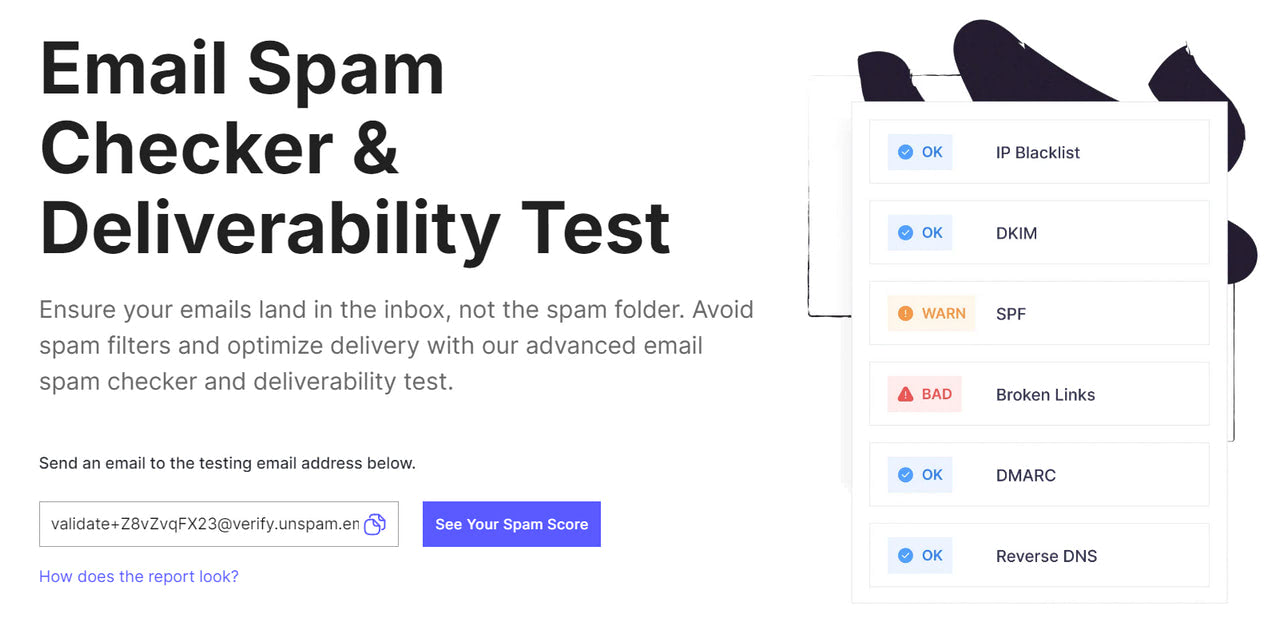
Never Buy Mailing Lists
A mailing list is the most valuable asset in email marketing that could do wonders for a company. It supports successful outreach with high conversions and secures the great return on investment necessary to advance the company. However, making it big is time-consuming, daunting, and challenging, as lead generation is slow.
Buying an email list from third-party vendors might seem like a tempting shortcut, but it is one of the worst things you can do. It is never worth it simply because those contacts do not want to do business with you in the first place. You do not have their consent and have never engaged them with your content. So, chances are, they will mark you as spam or register a spam complaint, negatively impacting your deliverability rate and the sender’s score.
There is more. Here are some other bad consequences that might await you:
- You may face fines and account suspension because you break the laws and international regulations like GDPR and the CAN-SPAM Act.
- You may damage your sender’s score and brand’s reputation.
- You might get blocked, as spam traps are frequent in purchased mailing lists.
- You might get poor results from email campaigns by sending irrelevant content to newly acquired subscribers.
- You might not be able to use professional email marketing services as they are eliminating companies that adopt “grey” practices in email marketing.
Instead, grow the mailing list organically. It might take time, but it will provide you with a better connection with your target audience, higher email campaign performance, and a greater return on investment. Here are some ideas that you can implement:
Provide your prospects with different ways to subscribe to your mailing list. Add a signup form to the website, landing page, or mobile application—link to your signup form in social media, forums, and communities.
Draw attention to your mailing list on your digital real estate. You may create pop-ups or allocate the whole header section to it.
Capitalize on word-of-mouth initiatives and encourage your brand advocates and existing subscribers to refer friends, family, and colleagues to your mailing list.
Share a lead magnet. Sometimes, people need a little nudge to join your community, like a freebie, giveaway, or discount code. You might even encourage them through contests. This is a widely adopted practice for growing a mailing list, but it has certain drawbacks, so you must be cautious and work with this group of contacts separately.
Introduce Double Opt-In
Among all professional email list hygiene tips, introducing double opt-in is critical for establishing a strong proactive strategy in the email channel. The technique implies acquiring new subscribers through two basic yet vital steps:
Step one – a user signs up for an email marketing list by typing their email address into the required field.
Step two – the company verifies each email address added to its contact database by sending a confirmation letter. New contacts should confirm their email subscription and consent to receive digital correspondence.
While this approach might slow down lead generation and even scare away some potential buyers, it certainly improves the mailing quality and email campaign performance.
First, it ensures every new subscriber is interested in your brand and content. As you send to engaged customers, avoiding spam and bounces, you expect good deliverability that translates into high open rates, click-through rates, and conversions. This positive reaction influences your email campaign performance and builds trust in the eyes of ISPs and mailbox providers. It will eventually increase your credit and let you easily skip filters and barriers.
Second, it allows a company to obey laws and regulations set by GDPR and CAN-SPAM ACT by getting explicit consent.
Third, it makes sure the email addresses are valid and verified in the mailing list, averting issues related to typos in the signup form.
Fourth, it helps a company to avoid subscribers submitting email addresses that are rarely checked, fake, or do not belong to them.
Fifth, it helps a company avoid spam traps that bad actors may leave in signup form to compromise mailing lists.
Finally, it underlies a strong foundation for building healthy relationships with customers. When starting on a good note, you may inspire the trust and loyalty necessary to turn newcomers into brand advocates. Some companies use confirmation emails as a part of their welcome series, inviting new customers into their world and showcasing the brand in the best light.
Follow these best practices to perfect double opt-in:
- Protect signup with validation and CAPTCHA.
- Keep your confirmation process simple and quick.
- Add an unchecked consent checkbox that allows users to agree to receive marketing emails explicitly. This will ensure that you meet GDPR and CAN-SPAM Act regulations.
- Add unsubscribe option. Include a straightforward way for subscribers to opt out in follow-up emails.
- Be transparent and tell your subscribers what to expect from your brand. Explain the purpose of collecting email addresses and what types of emails they will receive.
- Initiate a welcome or onboarding series right after confirmation. Provide them with a link to the preference center so they can alter their email environment.
- Personalize confirmation email, welcome email, and onboarding.
- Automate the process through professional email marketing platforms.
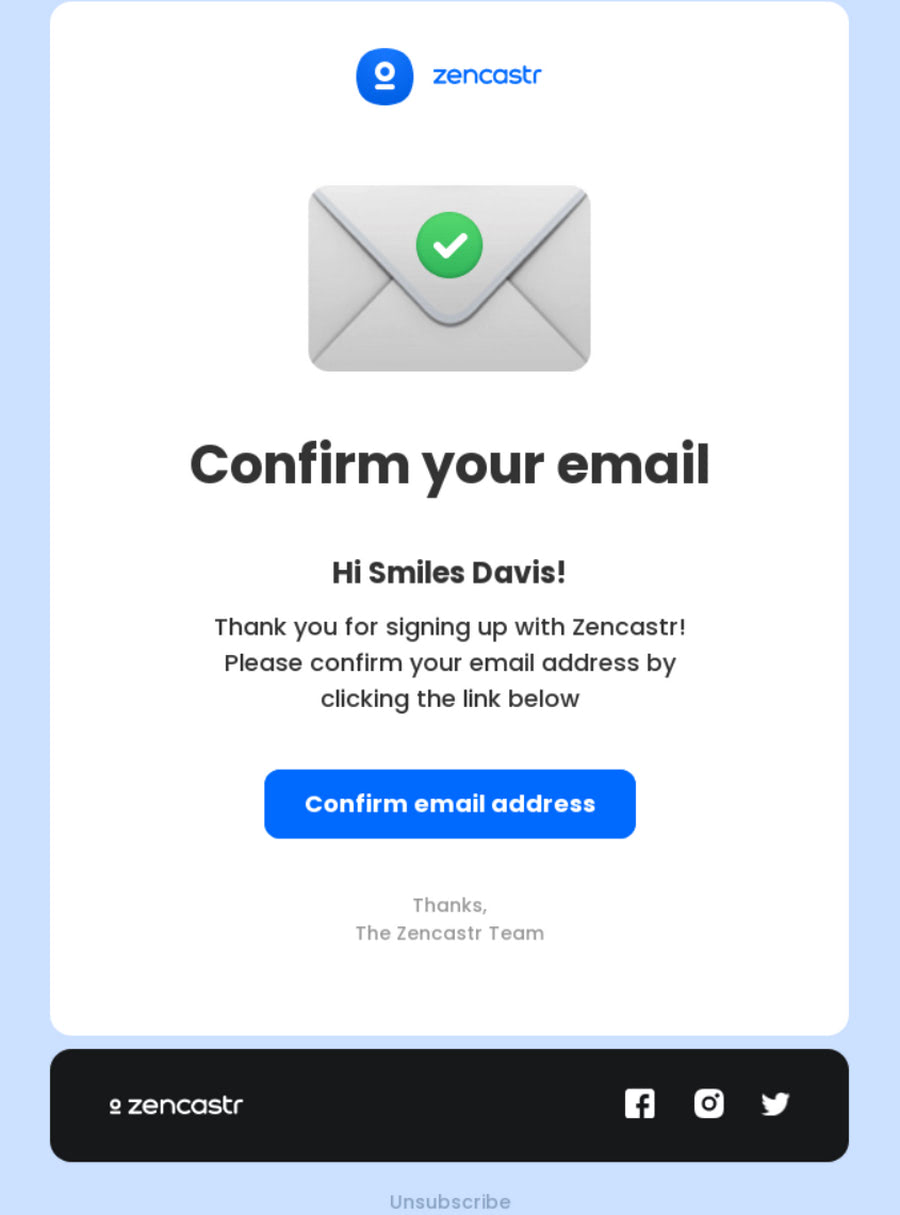
Confirmation email from Zencastr
Address Bounces, Spam, Complaints and Unsubscribes
Bounces, spam, complaints, and unsubscribes have a detrimental impact on your email list health. When left neglected, they harm email campaign performance and the brand’s presence on the channel. It is crucial to address them immediately and avoid the aftermath that they might bring. Let’s consider each type of email account separately.
Bounces
Bounces come in two forms: soft and hard. Soft bounces are caused by temporary issues like a full recipient’s mailbox or authentication problems. As a rule, companies leave them on the mailing list and try to reach them again.
It must be noted that sometimes soft bounces may turn into hard bounces. Therefore, it is crucial to single them out and monitor their progress. If you still cannot reach out to the contact and a temporary problem remains blocking your way to their inbox, then removing the address from the mailing list is better.
Hard bounces occur for permanent reasons like non-existent accounts. The only thing you can do is remove them from the mailing list, as they may only damage your sender’s score.
Spam and spam complaints
Spam and spam complaints are unpleasant but can be fixed in some situations.
Being flagged as spam means your email lands in a spam folder instead of an inbox. This could happen for many reasons:
- The email has forbidden attachments, content, or scripts.
- The email is too large.
- The email has spammy words in the subject line or body copy.
- The email has a low open and read rate, etc.
Many practices exist to address these issues, but first and foremost, companies should test their email against spam using professional software like Unspam. It will surface hidden problems that may trigger mailbox spam filters, giving companies the necessary knowledge to make informed decisions.
Spam complaints should be addressed immediately. The company’s response should include consent from the contact to receive your emails and proof that the email was solicited. Depending on the complaint, email marketers should remove the account from the database or initiate a re-engagement campaign to regain customer trust.
Unsubscribe
Unsubscribed email addresses belong to contacts who have opted out of the mailing list. The rule of thumb is to respect customers’ right to leave and let them go by removing them from your mailing list without asking questions.
But this does not mean you cannot improve your last impression. Some retaining tactics may help you foster a positive last impression and persuade them to switch to another digital channel, thereby saving your precious customers.
One such tactic is sending a final apologetic letter with a special offer or prompt to follow you on social media. You may also include a short survey to get insights into how your emails fall short for subscribers and use this information to address issues in similar situations.
Pay Thorough Attention to Inactive Subscribers
Inactive subscribers are contacts who willingly opt-in to the mailing list by providing a valid email address but become disengaged with the brand and content and eventually stop interacting with email. This happens constantly, and no business is immune to it as customer preferences change.
The sad truth is that this type of email account may potentially harm your email list hygiene, campaign performance, sender’s score, and brand reputation, as ISPs take contact responses to digital correspondence seriously. The fewer opens and reads you get, the more likely your mailbox provider will put your next email in the spam folder or reject it. Plus, inactive and disengaged subscribers may also mark email as spam or register a complaint.
Therefore, one of the best email list hygiene tips is identifying inactive subscribers, paying thorough attention to them, and, most importantly, taking countermeasures to re-engage them. As a rule, companies are advised to do the following:
- Identify inactive subscribers in the mailing list.
- Define their type to group them according to their behavior and response. These might be never-active contacts, lapsed contacts (users who have not purchased anything from you in a while), or inactive contacts (users who have stopped engaging with email content but still make regular purchases).
- Create a re-engagement campaign for every type.
- Delete contacts that stayed unresponsive after the re-engagement phase.

Re-engagement email campaign by Zoom
Include Unsubscribe Option in Every Email
Including an unsubscribe option in every promotional or transactional email is one of the most overlooked yet critical email list hygiene tips. Allowing recipients to unsubscribe from your mailing list any time they want is not only about good manners and respect; it is also a law established by international regulations like GDPR and the CAN-SPAM Act.
So, what should you do apart from adding an unsubscribe option to every email that reaches your subscribers?
First and foremost, never hide it. Make it recognizable and place it in the footer right where customers expect to find it. Ensure contrast and optimal readability so that users may easily delineate it.
Second, make the unsubscribe process simple, easy, and fast. Do not doubt the recipient’s decision. Just give them what they need right away.
Third, do not make people log in to unsubscribe. This could be annoying and leave a poor last impression of the brand.
Fourth, do not send an email confirmation of the unsubscribe action unless you want to acknowledge how sad you are losing such a precious contact.
Fifth, customize your unsubscribe page to look less generic. Use branded colors and a personal message to sound human-like.
Sixth, if your relationships with customers allow that, offer a chance to “opt-down” or personalize their email environment rather than leave.
Seventh, ensure your unsubscribe links are active, valid, and work for at least 60 days after you send the email.
Finally, never make people wait for their unsubscribes to take effect. Remove their contact information immediately.
Establish Ongoing Maintenance and Define the Right Frequency for Cleaning
Cleaning your email list should not be a forced measure because you have recently experienced a spike in bounces or a drop in email campaign performance. Although it is better late than never, as practice shows, a proactive strategy is the best way to keep your privileges in the email channel and secure your progress.
Therefore, one of the professional email list hygiene tips is to establish ongoing maintenance starting at the acquisition point. Keep your email database clean by removing inaccurate, redundant, invalid, and fraudulent instances. Closely work with types of email accounts that may eventually harm your presence in the channel.
Defining the right cleaning frequency is crucial when following this tip. How often you should do it largely depends on your email list size and content, lead generation strategy, and email marketing goals. Some professionals suggest initiating cleaning and scrubbing at least once every six months, while others resort to this practice more often.
The good advice is to constantly assess the efficacy of email list cleaning by going through engagement metrics and deliverability rates. This way, you get data-baked insights on what works or does not, adjusting your cadence accordingly.
Conclusion
Some say successful email marketing is just a matter of volume: the bigger, the better. However, in practice, quality always beats quantity. Recklessly building a massive email list is a strategy that is too short-sighted if you want to achieve long-term success.
The company’s growth largely depends on its performance during email campaigns. A good deliverability rate and high key metrics like opens, reads, and clicks could be achieved only with relevant content reaching engaged and active subscribers. As good email performance is closely tied to good, clean data, email list sanitation comes of huge importance. Perfecting it is a strategic endeavor for every company concerned with its success in the email channel.
However, do not wait until a springtime clean or a spike in unsubscribes, hard bounces, or spam complaints. Regularly cleaning, scrubbing, and polishing email databases brings the best results. Therefore, introduce it as an integral part of your email marketing routine and constantly implement professional email list hygiene tips to improve email list health from all angles.


